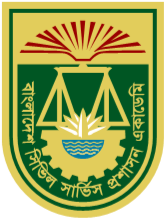State Owned Leased out Water Bodies: Evolution of Lease Management and Its Role in Social Progress
Keywords:
: Water Bodies (WBs), Water Retention Area (WRA), Encroachment, Anecdotal Evidence, Sairats, Sustainable Development Goals (SDGs, Fiscal SpaceAbstract
Water Bodies (WBs) or Jalmahals are an integral feature of our gradually developed
homeland or so called delta (δ) land. At present, there are about 10,500 (ten thousand and
five hundred) number of state owned WBs in our territory. The quantity is endorsed by the
Ministry of Land and it would be two or three times higher if all private owned WBs are
taken into consideration. These are classified primarily in respect of their sizes namely,
above or below 20 acres of WBs. Analysis of the Government Jalmahal Management
Instructions, 2009” and “Government Jalmahal Management Instructions, 2009 amended in
2012” clearly reveal that there are a lot of shortcomings in these two and all policy
documents. Moreover, many significant attributes, such as the role of WBs as natural sweet
water reservoir, its role to balance the biodiversity and its importance to maintain standard
underground water levels are absent in present documents. It is a fact that, WBs including
river are facing relentless problems in terms of court litigations, illegal encroachment, and
demarcation of outer boundaries, water retention area, and scarcity of water and so on. An
inclusive policy framing including enactment and enforcement is badly needed to meet all
the current challenges. Another important aspect is that, it is a huge resource and we can
utilize it as a fiscal space. This research attempts to address the total issue by exploring
available policy documents, primary and secondary data, stakeholder’s opinion, and
available direct and anecdotal evidences in a way of qualitative method of analysis.

